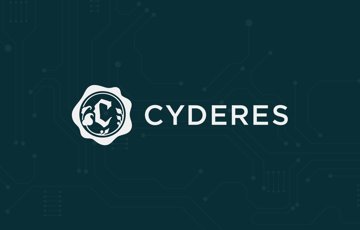Cybersecurity Awareness Month (CAM) is a global initiative created by the U.S. Department of Homeland Security and the National Cyber Security Alliance to recognize the importance of digital security for both business and individuals. Now an internationally recognized campaign, CAM aims to spread awareness about the importance and urgency of cybersecurity.
This year’s campaign theme from the Cybersecurity and Infrastructure Security Agency (CISA) — “See Yourself in Cyber” — emphasizes that everyone has a part to play in strengthening an organization’s security posture. From cybersecurity leaders to end users, CISA recommends focusing on four key behaviors to strengthen cybersecurity:
- Enabling multi-factor authentication
- Using strong passwords and a password manager
- Updating software
- Recognizing and reporting phishing
Half of these best practices, MFA and strong password security, emphasize the importance of identity and access management—and for good reason. With the boom of remote work, technology advancements, and the widespread move to the cloud, the security perimeter is nearly impossible to define. As a result, enterprises are shifting away from traditional perimeter security methods towards identify-focused technology and authentication.
Identity: The new perimeter
Every IoT device, human, user, service account, and bot within an organization has an identity, and these combined identities comprise the new perimeter. By blocking any access point that cannot authenticate the identity with the correct permissions, the system keeps unauthorized users out while allowing other processes to continue as needed.
Identity programs can help provide visibility into who has access to what at any given time and centrally govern and enforce policies on all accounts. There are four pillars of identity programs:
- Identity governance and administration (IGA)
- Access management
- Multi-factor authentication (MFA)
- Privileged access management (PAM)
Empowering end users to “see yourself in cyber”
It’s one thing for an enterprise to establish a strong identity program, and a completely other to help employees understand why identity is important to both them and the business.
This is where initiatives like Cybersecurity Awareness Month can have the greatest impact. Although end users might have a base-level understanding of identity, ongoing training and education can help them more fully understand what accounts they have, what access those accounts have, and why it matters to them.
Enterprise leaders can start bridging that gap through employee training programs, regular lunch and learns, or by bolstering change champions within the organization. The only way these efforts are effective, however, is if they are approachable for the end user.
Get tips: Download CISA’s cybersecurity awareness month tool kit to share with your employees.
Next-level IAM
Although identity functions like single sign-on and multi-factor authentication have been widely implemented by many enterprises, fewer are regularly examining these solutions for opportunities to take them to the next level.
And unfortunately, these tools aren’t foolproof. Tactics like MFA fatigue are increasingly compromising the effectiveness of these tools. Features like artificial intelligence and machine learning can help leaders strengthen their security posture.
Identity tools alone—even with the most robust features—won’t offer turnkey protection against threats, however. A risk analysis can help determine what vulnerabilities may exist and what steps can be taken to mitigate them.
A risk-based approach identifies tiers to help leaders prioritize. At the most basic level, cybersecurity leaders need to protect the front door, such as VPN access to e-mail or communication channels. But then there should also be additional layers around those more sensitive applications and datasets. That’s where we need to start looking a little deeper.
Starting your IAM journey
It’s common for enterprise leaders to hope for a one-stop-shop solution to address all their identity and cybersecurity needs. Unfortunately, tools alone cannot identify your weaknesses, patch holes, monitor for incidents, and allow you to see everything that goes on in your enterprise and protect yourself against every threat.
Effective programs are comprised of the right people, processes, and technology. The best place to start is to assess your current posture, identity any gaps, and determine your desired business outcomes.
Want to learn more? Explore more IAM resources and services, and stay tuned for more Cybersecurity Awareness Month tips.
Take the first step in transforming your cybersecurity program
Enterprise security teams are adapting to meet evolving business needs. With six global Security Operations Centers, emerging technology partners and a dedicated team of security specialists, Cyderes is well-positioned to be your organization’s trusted advisor in cybersecurity. We’ll help you understand your risk exposure, increase your visibility and ROI, and proactively hunt for the latest threats.
